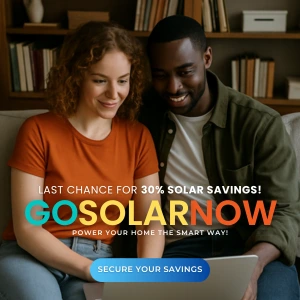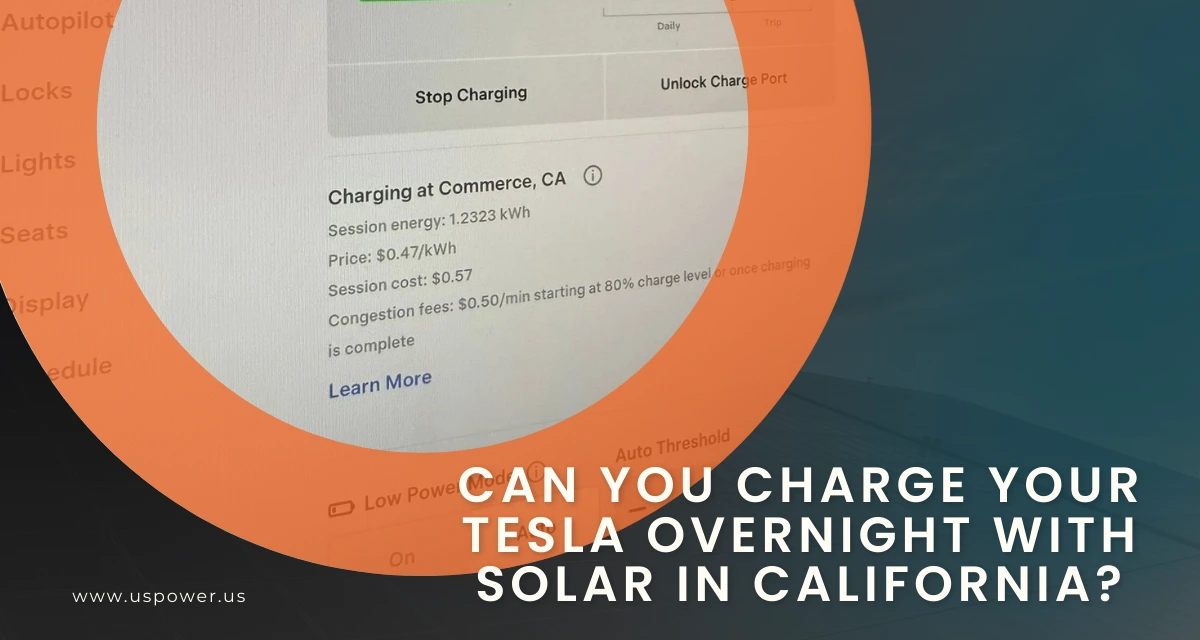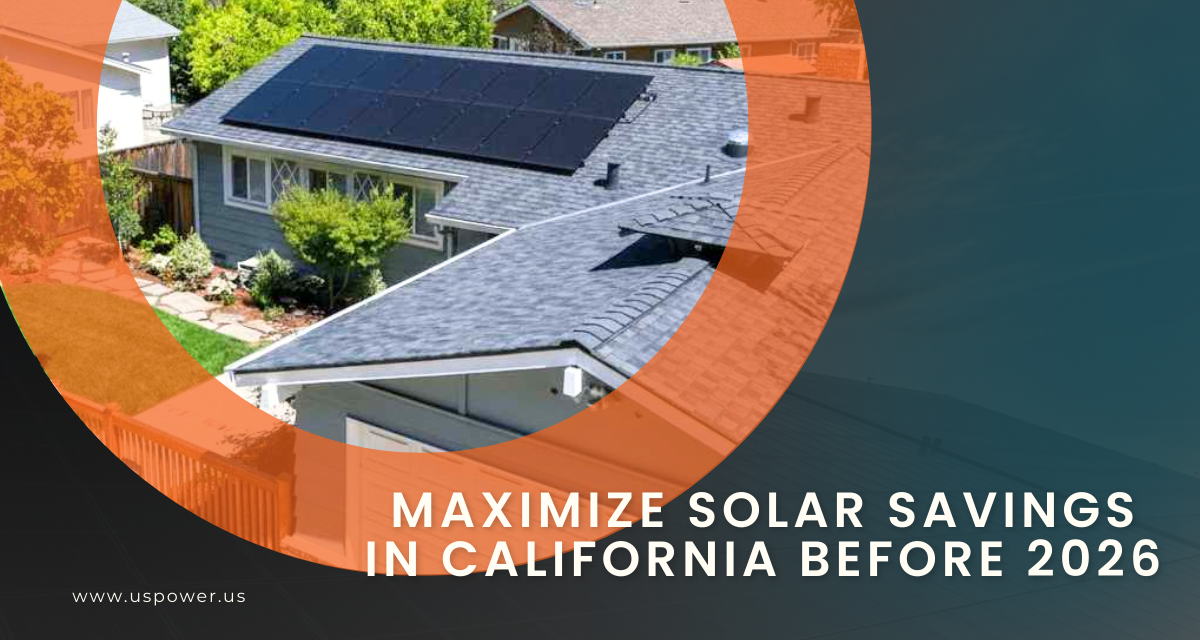The Complete 2025 Guide to Home Energy Integration

Solar and Roofing Advisor
Go solar and charge smarter. US Power installs QCells-powered solar EV systems across Southern California. Cut charging costs by up to 70%.
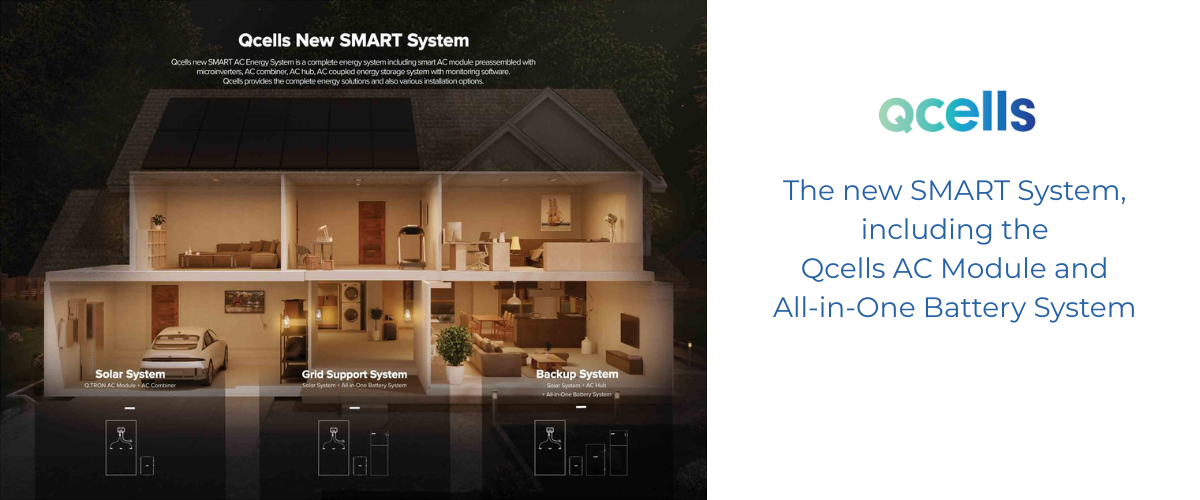
The electric vehicle (EV) revolution is here — and it’s changing the way Californians think about energy. With gas prices rising and the state pushing toward 100% clean energy by 2045, homeowners are realizing that the smartest way to fuel an EV isn’t at a public station — it’s right at home.
Across Southern California, thousands of homeowners are combining solar power systems with EV charging stations, creating a seamless, cost-efficient, and sustainable home energy setup. This integration doesn’t just cut costs; it gives families greater energy independence, resilience during outages, and long-term control over utility rates.
That’s where US Power, a trusted Southern California solar installer, steps in. Partnering exclusively with QCells, one of the most advanced solar manufacturers in the world, US Power delivers American-made, factory-direct panels that make solar + EV charging both smarter and more affordable.
Why Solar EV Charging Is the Next Big Step for Homeowners
Charging an electric vehicle from the grid can be costly — especially under California’s time-of-use (TOU) electricity pricing. EV owners often see their bills spike when charging during peak hours (4–9 p.m.), when utility rates are at their highest.
By switching to solar, homeowners can power their vehicles directly from sunlight, bypassing those unpredictable utility spikes and drastically reducing monthly costs. In many cases, solar charging can cut EV fueling costs by 70% or more compared to grid electricity — a difference that adds up to thousands in yearly savings.
But solar EV charging is about more than just savings. It represents a complete home energy ecosystem, where solar panels, home batteries, and EV chargers work together to store, distribute, and optimize energy efficiently.
QCells + US Power: Building the Foundation for Smarter Energy Homes
With technology advancing fast, not all solar panels or setups are built the same. US Power’s exclusive partnership with QCells allows Southern California homeowners to access premium solar systems at factory-direct pricing — something most local installers can’t offer.
QCells panels are known for:
- High efficiency (up to 22%), meaning more power per square foot.
- Exceptional durability, built for California’s climate, from hot valleys to coastal regions.
- U.S. manufacturing under the Inflation Reduction Act (IRA), supporting American jobs and qualifying for added federal incentives.
US Power combines these panels with custom energy setups — integrating solar panels, home batteries, and EV chargers into a unified system designed for your home’s unique layout and energy needs.
Understanding the Three Types of EV Chargers for Home Use
Level 1 Charging: Basic but Slow
- Power Source: Standard 120V outlet
- Charging Speed: 3–5 miles of range per hour
- Best For: Occasional EV drivers or plug-in hybrids
While Level 1 is convenient, it’s slow. For daily EV users, upgrading to Level 2 or integrating solar charging is far more practical.
Level 2 Charging: The Sweet Spot for Homeowners
- Power Source: 240V outlet (similar to a dryer plug)
- Charging Speed: 20–40 miles of range per hour
- Best For: Most EV owners with daily commutes
This is the most popular choice for homeowners in Southern California. Level 2 chargers pair perfectly with residential solar panels and home batteries, providing fast, cost-efficient charging directly from the sun.
DC Fast Charging: High Power, High Cost
- Power Source: Direct Current (480V+)
- Charging Speed: 60–100 miles of range in 10–20 minutes
- Best For: Commercial or public installations
While DC fast charging offers unmatched speed, it’s rarely cost-effective for home use due to its installation complexity and power requirements.
Most homeowners find that Level 2 charging integrated with solar power offers the best balance of speed, cost, and convenience.
How Solar Panels and Battery Storage Work with EV Charging
A properly designed system goes beyond installing solar panels and plugging in a charger. The goal is energy optimization — using every watt efficiently.
Here’s how it works:
- Daytime: Solar panels generate electricity. A portion powers the home directly, while excess energy charges the EV or is stored in a home battery (like Tesla Powerwall or QCells’ own storage units).
- Evening/Night: Stored energy powers the EV charger and home appliances when the sun sets, avoiding high TOU rates.
- Outage Mode: During grid outages, the battery can keep both the home and EV powered — providing reliable backup energy.
With NEM 3.0’s new export rules, storing and using your solar power on-site has become more valuable than sending it back to the grid. Pairing solar with battery storage and EV charging ensures homeowners maximize self-consumption and avoid lower utility export credits.
Local Insight: Why Southern California Is Perfect for Solar + EV Integration
Southern California receives over 280 sunny days per year, making it one of the best regions in the U.S. for solar energy production. Meanwhile, EV ownership continues to surge — over 1.5 million EVs are projected to be on California roads by 2026, driven by state incentives and rising fuel costs.
This combination makes solar EV integration not just a smart upgrade — but a strategic investment. Homeowners gain energy independence, protection against utility rate hikes, and the satisfaction of contributing to a cleaner grid.
The ROI of Solar-Powered EV Charging in 2025
Switching to a solar-integrated EV charging system isn’t just an environmental move — it’s a financial strategy.
For a typical Southern California homeowner driving around 12,000 miles per year, charging an EV from the grid costs about $1,000–$1,200 annually, depending on utility rates. With a properly sized solar system, that annual cost can drop to $200–$300, or even zero if paired with efficient battery storage.
Over 25 years — the average lifespan of QCells panels — homeowners can expect to save $25,000–$35,000 in combined energy and fuel costs. When factoring in California’s frequent utility rate hikes (around 5–8% per year), the ROI becomes even more attractive.
Solar EV systems typically pay for themselves in 5 to 8 years, after which the energy is essentially free. Add in the federal solar tax credit (30%) and available battery or EV rebates, and homeowners can further reduce upfront costs by several thousand dollars.
2025 Incentives and Programs for California Homeowners
Federal Residential Clean Energy Credit — ending Dec 31, 2025
- The Residential Clean Energy Credit (Section 25D) still provides a 30% tax credit for qualified solar + storage systems through December 31, 2025.
- However, under the “One Big Beautiful Bill” (OBBB) passed in mid-2025, the credit will not be allowed for any property “placed in service” after December 31, 2025.
- In simpler terms: 2025 is the last year homeowners can commission their solar + battery systems and claim the 30% credit. Systems installed or turned on in 2026 and beyond will not qualify under the residential credit rules.
- Thus, timing is critical: contracts, permitting, interconnection, inspections, and the utility’s “Permission to Operate (PTO)” or equivalent must be completed before year-end to qualify.
California’s Self-Generation Incentive Program (SGIP) — active, evolving, and equity-focused
SGIP remains one of the most important state-level incentives in 2025, especially for home battery + paired solar systems. Below are the updated details:
- Residential Solar & Storage Equity Budget (AB 209)
Beginning June 2, 2025, SGIP expanded to include a new Solar + Storage Equity Incentive aimed at low-income or disadvantaged households.- Incentive rates: $3,100 per kW of solar generation + $1,100 per kWh of battery storage for qualifying systems.
- Up to 50% of incentive payment may be made in advance to help cover initial costs.
- General SGIP rebates (non-equity / standard residential)
- For many utility territories, the rebate for battery storage ranges roughly from $150 to $300 per kWh, depending on program step, utility, and project timing.
- Some utilities allow incentives covering 15% to 100% of battery + paired solar system costs, especially under equity or resiliency categories.
- Note: SGIP funding is limited and is administered in reservation windows by region; incentives vary based on available budget.
- Important caveats & timeline
- The CPUC’s 2025 SGIP Handbook confirms that incentive reservations are valid through December 31, 2025, subject to availability.
- Applicants in income-qualified / equity categories must act early because funds are expected to deplete.
Other relevant California incentives & considerations
- Net Metering / Net Billing (NEM 3.0)
- California has transitioned from NEM 2.0 to a “Net Billing Tariff” (often called NEM 3.0), which significantly reduced export credit rates for excess solar sent to the grid.
- Under NEM 3.0, self-consumption (using solar onsite or storing in a battery) becomes much more valuable than exporting to the grid.
- Many analysis models show that solar + battery systems under NEM 3.0 can still achieve payback in 7–8 years, while standalone solar-only (without storage) often has a longer payback due to reduced export rates.
- Local utility-level and city programs
- Some cities, municipal utilities (e.g., LADWP) may offer additional rebates or programs under SGIP or separately.
- Because local incentives can change often, projects should always verify current eligibility and rates via utility or city websites.
Solar EV Charging vs. Grid Charging: The 2025 Comparison
| Feature | Solar EV Charging | Grid EV Charging |
|---|---|---|
| Energy Source | Renewable (Sunlight) | Utility Grid (Fossil-based mix) |
| Annual Cost | $200–$300 | $1,000–$1,200 |
| Carbon Emissions | 0 g CO₂ | ~2,000 kg CO₂/year |
| Independence | Full energy autonomy | Dependent on grid rates |
| ROI Timeline | 5–8 years | No long-term ROI |
| Resilience | Battery backup available | Grid outages stop charging |
Homeowners who invest in solar charging not only save more but also gain long-term protection from California’s unpredictable utility prices. Grid users, on the other hand, face growing costs — especially with SCE and LADWP planning more rate increases in the next few years to modernize infrastructure.
Building a Complete Home Energy Ecosystem
The future of clean energy isn’t just about generating power — it’s about managing it intelligently.
A full home energy ecosystem integrates three key components:
- Solar panels generate clean electricity.
- Battery storage keeps energy ready for night use or power outages.
- Smart EV chargers communicate with your system, adjusting charge levels based on solar production and battery status.
This creates a self-sustaining, efficient system that lowers your carbon footprint, improves energy security, and enhances property value. Homes with solar + EV-ready setups are increasingly attractive to buyers — with Zillow reporting that solar homes in California sell for 4–6% more on average.
Why Homeowners Choose US Power for Solar + EV Integration
When it comes to turning your home into a renewable powerhouse, experience and technology matter.
US Power is Southern California’s trusted solar installation company specializing in end-to-end solar energy systems, battery storage, and EV charger integration. With an exclusive partnership with QCells, US Power provides:
- Factory-direct pricing on premium, American-made solar panels
- Tailored system designs to maximize energy savings under NEM 3.0
- Expert installation by certified local professionals
- Comprehensive warranty and long-term support
US Power doesn’t just install panels — it builds custom energy ecosystems that keep your home running smoothly, efficiently, and affordably.
A Smarter Way to Drive and Power Your Home
California’s transition toward electric mobility and clean energy is accelerating fast. By combining solar power, energy storage, and EV charging, homeowners are future-proofing their properties — gaining energy independence, saving thousands in utility costs, and contributing to a cleaner planet.
With QCells solar panels and US Power’s expertise, every system is built for performance, reliability, and long-term value.
Drive on sunlight — and take control of your home energy today.
Schedule your free consultation with US Power to design your QCells-powered solar + EV charging system.
Start your transition to clean, affordable energy before utility rates rise again.
Related Articles
Our Related Blogs
Tesla charging, Supercharging, and solar energy savings made easy for homeowners.
Stay ahead of the energy costs with 2025 solar trends in Southern California.
Explore the reasons why more California homeowners are choosing solar energy now.
Our Solar and Roof Brand Partners








We empower communities and businesses to harness clean, renewable solar energy solutions that drive sustainable growth.
Ready to Own Your Power? Call us today!
818-650-8010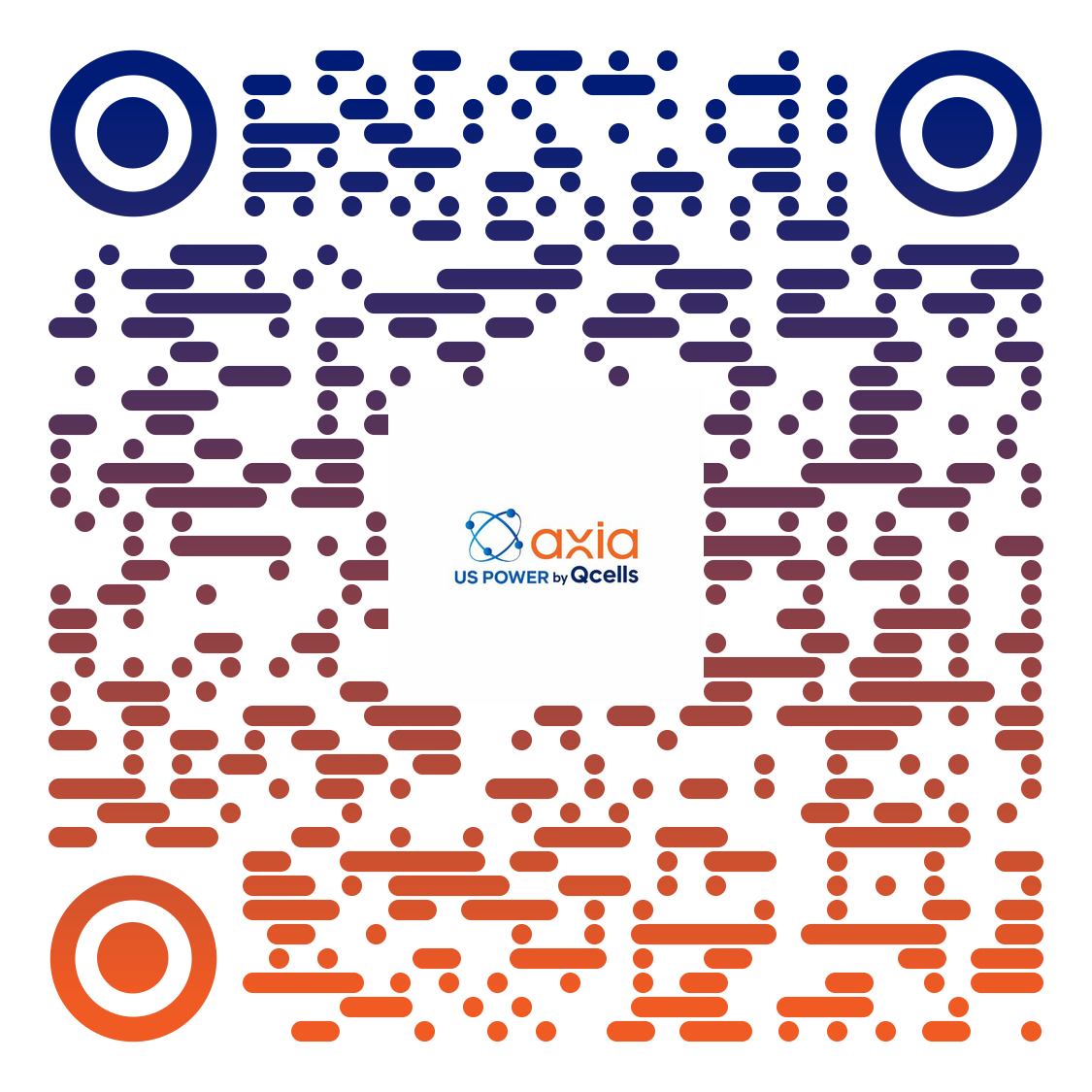
Copyright © 2025 US Power - Axia by QCells. All Rights Reserved.
Privacy is important to us, so you have the option of disabling certain types of storage that may not be necessary for the basic functioning of the website. Blocking categories may impact your experience on the website.
Essential
These items are required to enable basic website functionality.
Personalization
These items allow the website to remember choices you make (such as your user name, language, or the region you are in) and provide enhanced, more personal features.
Marketing
These items are used to deliver advertising that is more relevant to you and your interests.
Analytics
These items help the website operator understand how its website performs, how visitors interact with the site, and whether there may be technical issues.
We and our third-party partners use cookies and other technologies to enhance and track your experience on this site, conduct analytics, and personalize marketing to you. By using the site, you agree to our use of these technologies, including recording and monitoring your interactions with the site.
Get an instant solar estimate using satellite!

